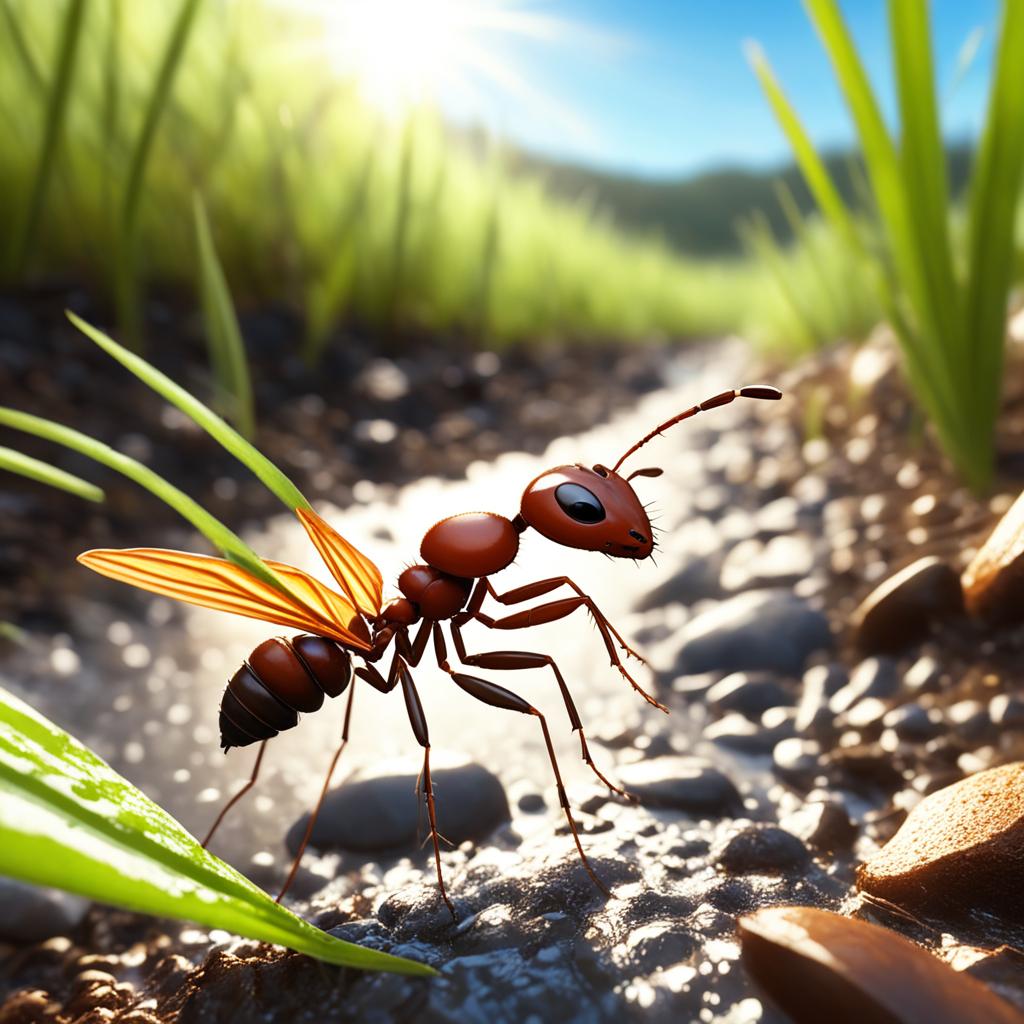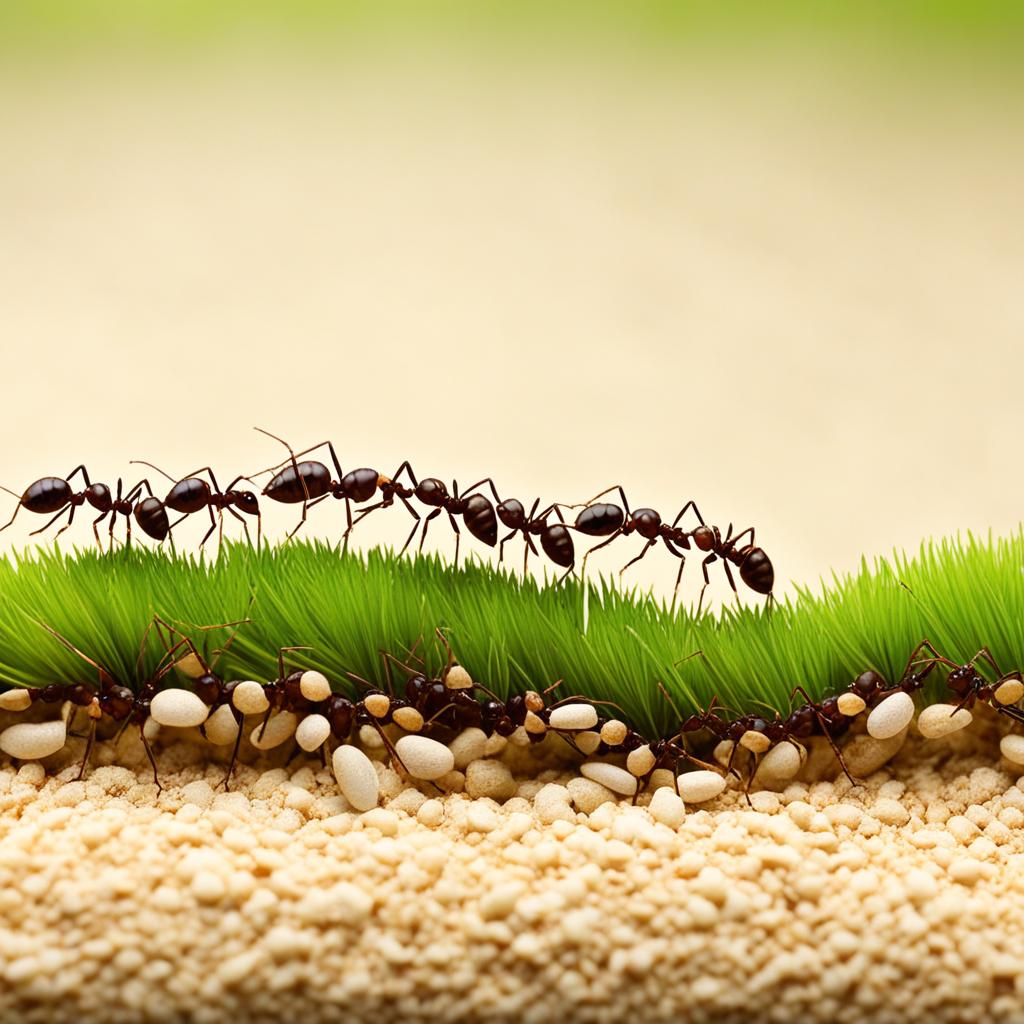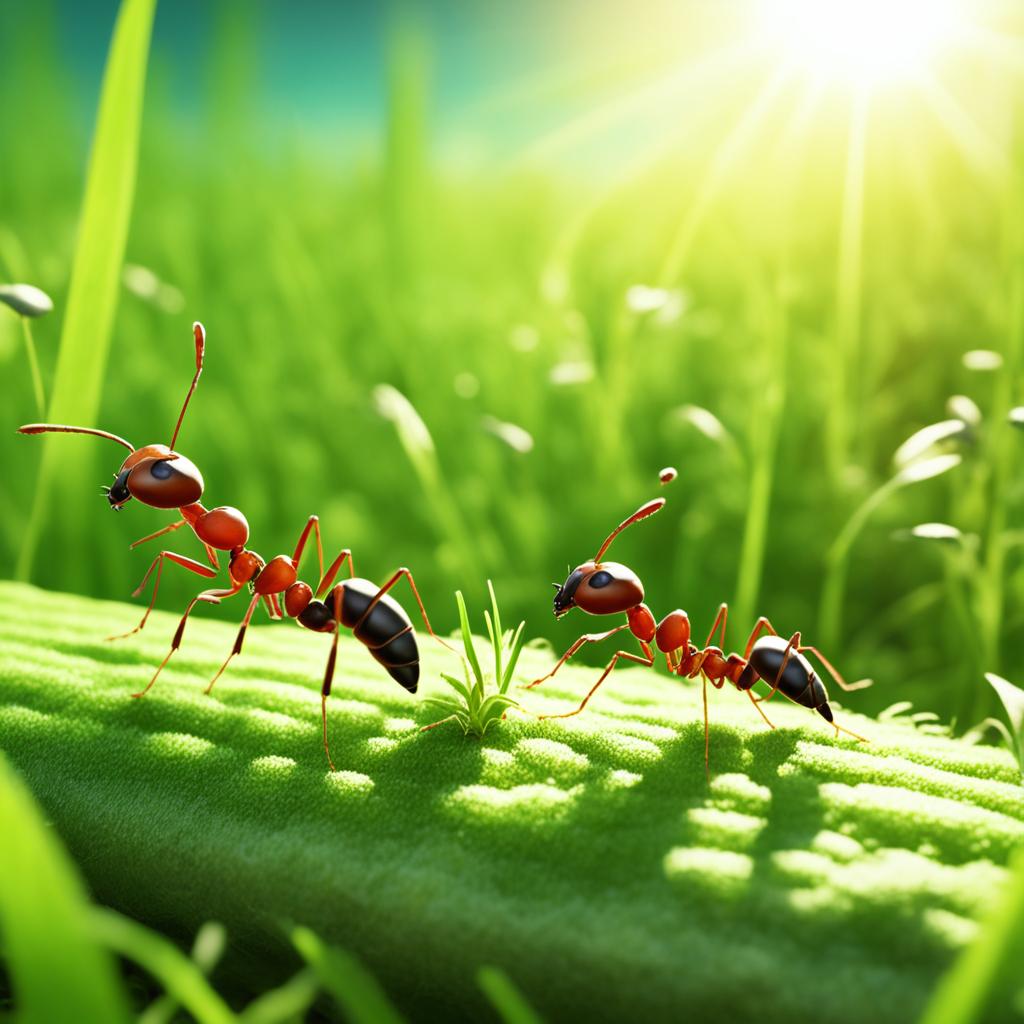Ants are fascinating creatures known for their hard work and ability to carry heavy loads. But have you ever wondered how far ants can actually travel? This question has intrigued scientists for years, and the answer might surprise you.
According to studies, ants can travel remarkable distances in their daily foraging activities. On average, an ant can travel between 6 feet and 150 yards from its colony in search of food. That may not seem like much, but considering their small size, it’s quite impressive. In fact, ants can cover around 3 to 4 miles in their daily foraging activities, moving at a speed of about 3 inches per second. But how do they accomplish these journeys? And what factors influence their travel distance?
Join us as we explore the captivating world of ants and uncover the secrets behind their impressive travel distances. Discover the factors that affect how far ants can go, compare their journeys to those of other animals, and learn why understanding ant travel is crucial for scientific research and ecosystem functioning.
Factors Affecting Ant Travel Distance

The distance that ants travel for foraging can be influenced by various factors. First, different species of ants may have different traveling habits. Some ants tend to have smaller foraging ranges and stay closer to their nests, while others may travel much farther. For example, the Argentine ant species (Linepithema humile) is known to form supercolonies stretching over hundreds of miles, allowing them to cover vast distances in search of food.
Secondly, the habitat in which the ants live can also impact their travel distance. Ants in urban areas may have smaller territories and travel shorter distances because they have access to human refuse as a food source. In contrast, ants in resource-scarce arid lands may have to travel longer distances. This is particularly true for desert ants such as the Harvester ant species (Pogonomyrmex spp.), which have to travel far to find vegetation and seeds to sustain their colonies.
Lastly, food availability plays a significant role in determining how far ants will travel. If resources are abundant in the vicinity of the nest, the ants may not need to venture far. However, in search of food, ants can cover impressive distances within their foraging territories. The Honeypot ant species (Myrmecocystus spp.) is an excellent example of this, as they store food in specialized workers known as repletes. These repletes can become large and swollen, allowing the ants to survive during periods of food scarcity, reducing the need to travel long distances.
| Factors | Impact on Ant Travel Distance |
|---|---|
| Different Ant Species | Different species have varying foraging ranges, leading to differences in travel distances. |
| Habitat | Ants in urban areas have access to human refuse, resulting in shorter travel distances. In contrast, ants in resource-scarce habitats may need to travel longer distances. |
| Food Availability | Abundant food resources close to the nest reduce the need for ants to travel far, while scarce resources necessitate longer travel distances. |
Coyotes vs. Ants: Who Travels Farther?
When it comes to comparing the traveling distances of coyotes and ants, it’s essential to consider their relative sizes. While ants can cover up to 3,000 miles in their lifetime, coyotes have been found to have an average home territory of around 36 square miles. However, young male coyotes that are dispersing may expand their territory to 60 or more square miles, and some have even been documented traveling over 300 miles. It’s important to note that coyotes’ travel distances can vary depending on factors such as food availability and the environment they inhabit. In comparison, ants may travel long distances for their size, but in terms of actual distances covered, coyotes are likely to come out on top – even urban coyotes have been known to travel several miles in search of food and territory.
The Challenges of Studying Ant Travel

Studying ant travel presents several challenges for researchers.
- Determining the exact path each ant takes and when it returns to the nest is one of the main difficulties.
- Significant movement within ant colonies can influence the total daily travel distance, making it harder to measure.
- The variety of ant species and their specific foraging habits pose a challenge as they can vary greatly.
- The availability of resources in the surrounding environment can affect the range of ant travel, making it difficult to generalize.
Despite these challenges, researchers have developed experimental designs to measure ant excursions. They use methods such as baiting, tracking, and observing individual ants to gather more accurate data on the traveling distances of different ant species.
The Importance of Understanding Ant Travel Distance
Understanding the distance that ants can travel for foraging is crucial for several reasons. Firstly, ants play a significant role in nutrient cycling and ecosystem functioning. By consuming and recycling organic matter, they contribute to the overall health of the environment. Their ability to travel far and wide helps in the distribution of nutrients and promotes energy flow within ecosystems.
Furthermore, information about ant travel distance is essential for scientific research and sampling techniques. When studying ants in various habitats, researchers need to collect samples to analyze their behavior, physiology, and morphology. By knowing the foraging range of different ant species, researchers can determine the appropriate sampling methods, ensuring accurate representation.
By gaining a better understanding of ant travel distance, scientists can improve the accuracy of their studies and enhance our overall knowledge of these remarkable creatures. This knowledge has ecological significance, as it helps us appreciate the essential role ants play in nutrient cycling and ecosystem functioning. Scientific research continues to uncover fascinating insights into ant behavior and their ecological contributions.


